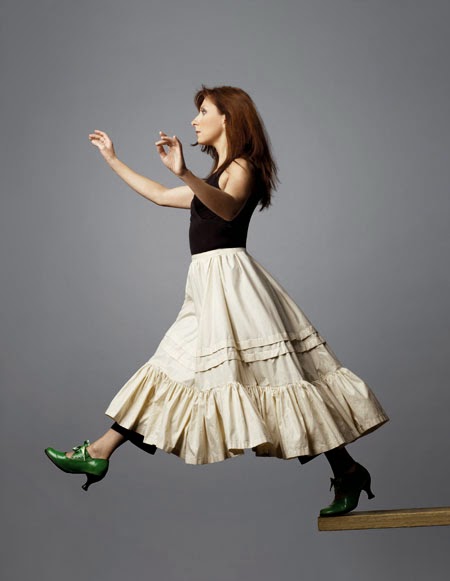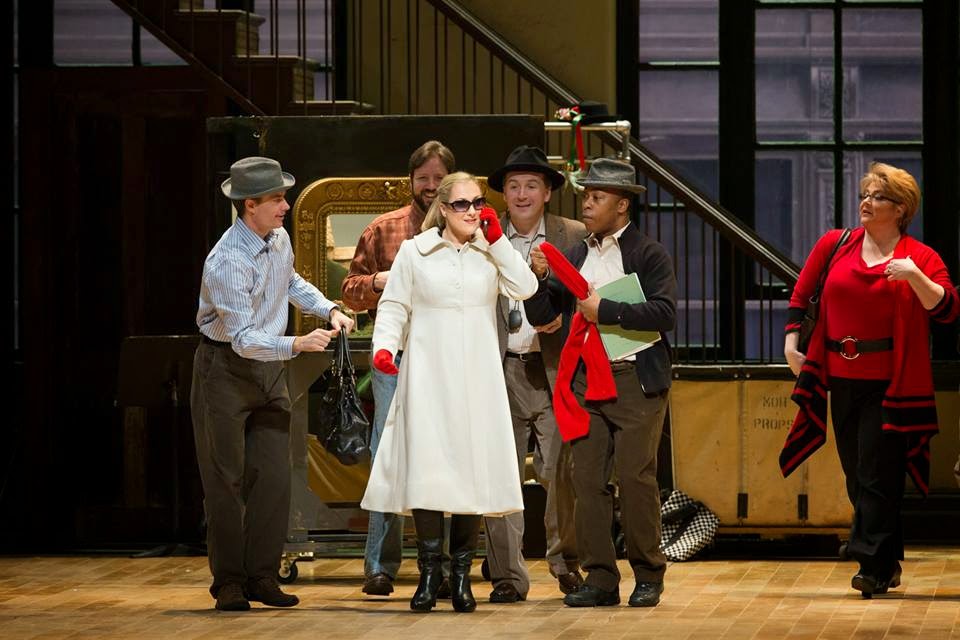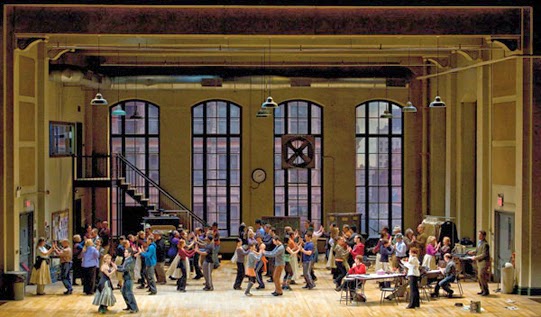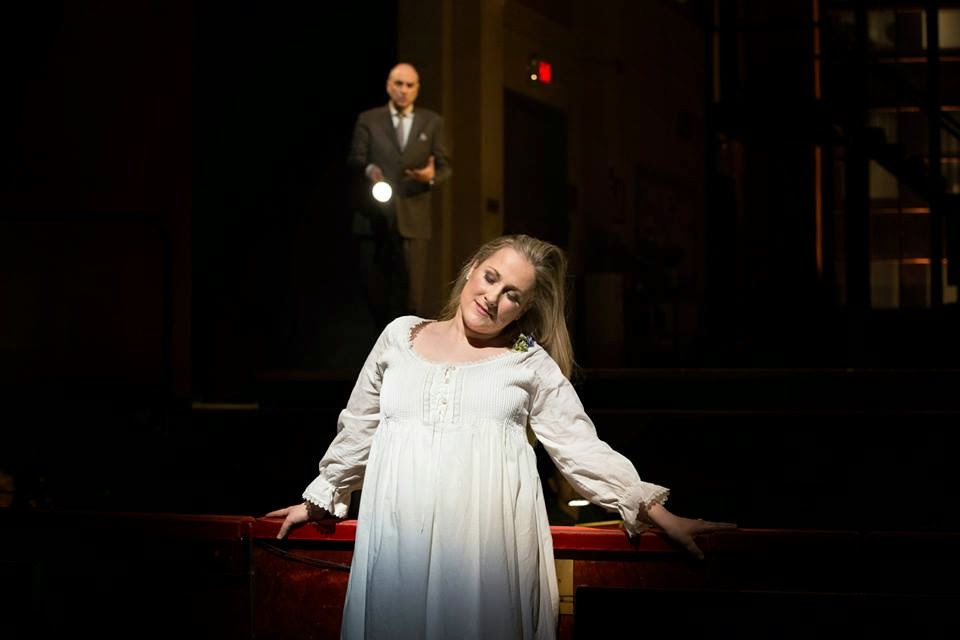Elizabeth – The Met’s revival of Bellini’s La Sonnambula has great choreography, brilliant singers and neat scenery, but the staging and some of Mary Zimmerman’s production didn’t make sense to me. The problem started with the italicized note before the synopsis in the program. We are told that the Met’s production is set in a contemporary rehearsal room where a traditional production of La Sonnambula is being prepared. All the events and relations that Bellini’s characters experience also happen to the rehearsing performers in their own “real” lives. I get it, metatheatre. I think that’s a neat concept. But when the staging doesn’t hold up, the play within a play becomes confusing and falls apart.
The singers, however, are great. Diana Damrau as Amina was stunning. I love her light yet powerful voice. I am a big fan of hers, especially after watching her Queen of the Night aria on Youtube (over and over and over again). This production has some pretty complicated choreography, courtesy of Daniel Pelzig, that has Damrau dancing, and at the end doing cartwheels, while singing. All of which she performed admirably. I can’t wait to see her next season in Manon. Rachelle Durkin as Lisa, the jealous woman after Amina’s fiancé, Elvino, started out a bit weak, but her voice grew stronger as the evening wore on. Hearing her so much more clearly later on I started wondering about amplification at the Met again—perhaps an investigation is called for. Durkin’s acting was also very good. I particularly enjoyed her pulling out her own white wedding dress that she had just in case things didn’t work out between Amina and Elvino. She was great as the bratty and conniving Lisa. Javier Camarena as Elvino was tremendous. I have never heard of him, but right off the bat he was strong and clear. I do wonder if there was a high note he didn’t take at the end of Act I, but really he was fabulous. His singing was not effortless, but it was terrific and on point and so well controlled. In the second Act there was show stopping applause after one his arias. He and Damrau also had great chemistry, a believable couple.
All of which makes it such a shame that the staging was confused. How is it possible that the characters in the opera are the same as the play? And then what happens when they’re singing in the aisles at the Met? Who is it that’s singing—the character Amina from the opera’s play or the actual Amina in the opera? Where is she supposed to be—at the rehearsal theatre or the inn that was staged at the rehearsal hall? Later, when Amina has fallen asleep in the count’s room, the villagers come to wake her. Again we are watching this happen in what looks like a staged room within their rehearsal hall. It seems that we’re supposed to believe that Amina actually is at an inn. But when the actors don’t follow the rules of the stage and walk right through imaginary walls instead of using the door, it’s hard to follow where we’re supposed to be. At the end of the opera the entire stage is taken apart while we’re watching Amina and Elvino dance, and I was left scratching my head. Where are we supposed to be? A disappointing production, with terrific singers.
 Shawn – I had never seen La Sonnambula before this production. I knew little about it save the images of Natalie Dessay goose-stepping into thin air that were plastered all over the buses, subways and seemingly every flat surface in the city in 2009. I know also this production by Mary Zimmerman was booed when it premiered with Dessay that same year.
Shawn – I had never seen La Sonnambula before this production. I knew little about it save the images of Natalie Dessay goose-stepping into thin air that were plastered all over the buses, subways and seemingly every flat surface in the city in 2009. I know also this production by Mary Zimmerman was booed when it premiered with Dessay that same year. 
The score seems geared to showcase a great soprano and tenor and Damrau and Camarena did not disappoint. They had real palpable chemistry together. I had never heard Javier Camarena before and found him striking. I even got goose bumps for a tiny nanosecond during one of Elvino’s act one arias. A tragically rare occurrence in my recent Met opera life. And seeing Diana Damrau do not one but two cartwheels onstage is nearly worth the price of admission alone.
(Photos Courtesy Metropolitan Opera Facebook Page)
Related Links:
Opera Singers, Oscar Winners and Cannibalism: Sweeney Todd at Avery Fisher Hall






Leave a Reply